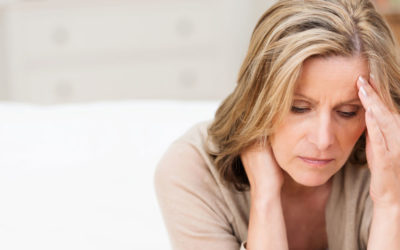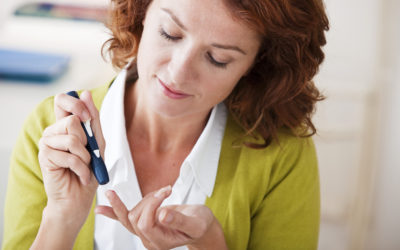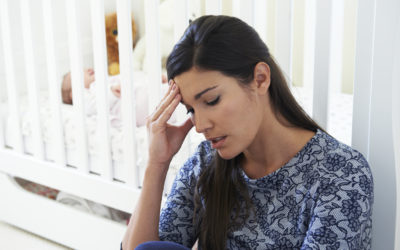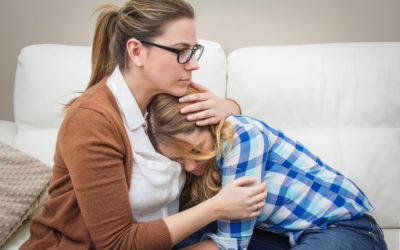Self-talk is the internal dialogue that narrates our daily experience. I often think of it as a digital voice recorder in our brain that is constantly recording and playing our thoughts. Self-talk influences our feelings and behaviors. It can also create patterns in our thinking that we call filters.
Expert Health Tips
Take advantage of their expertise in areas that interest you with our blogs, podcasts and health emails. And if you need a doctor, we can help with that too!
Recent Posts From Our Health Experts
Psychosis: Uncovering a Condition Found in 1 in 15 College Students
Have you ever heard someone greet you by name and when you turned to respond there was no one there? Have you ever walked into a room and remember seeing someone or something, and when you got closer, you realized what you thought you saw was not there?
5 Tips for Managing Stress & Staying Healthy
Some days it can seem impossible to juggle work and life while trying to stay healthy at the same time. Between working, caring for your children, assisting aging parents, making time for exercise and eating healthy, there just doesn’t seem to be enough hours in the day.
How to Spring Clean Your Sports Schedule
This fall, my sister and mom of three (ages 10, 9 and 7) made a very bold and completely unexpected declaration. “We aren’t doing any winter sports this year. We need a break,” she announced. I was honestly shocked.
I Feel Fine, But Could I Be at Risk for Heart Disease?
Blood pressure, diabetes, and family history are a few well-known risk factors for heart disease, but some little-known risk factors can also threaten your heart. The scary part is you may not even be aware of them.
Stay Ho Ho Hopeful: Managing the Stress of This Holiday Season
The holidays often are portrayed as a time of year that’s supposed to be filled with joy, family, friends, generosity and kindness. But for many parents, this is a time of year rife with emotional challenges and increased stress.
Preventing & Managing Diabetes
Diabetes is a silent disease affecting the lives of millions each year. Chances are you know someone with diabetes—a friend, family member or maybe even you.
5 Crucial Numbers Every Woman Needs to Know
Did you know that over 44 million women in the United States have heart disease? When it comes to your health, there are five crucial numbers to know about your heart.
I Have My “Bundle of Joy,” So Why Am I So Sad?
If you’re feeling sad, anxious or depressed either while pregnant or after having your baby, you are not alone! Nearly 1 in 7 women experience difficult emotions during pregnancy or after giving birth. It’s important to discuss this common yet treatable condition called postpartum depression.
Is My Child a Picky Eater or Problem Feeder?
Chicken nuggets, corn dogs, french fries, grilled cheese…repeat, repeat, repeat! Sound like a familiar menu in your household? Kids tend to gravitate toward processed, bland foods because these foods are predictable and easy to eat.
10 Dos and Don’ts for a Healthy Pregnancy & Baby
Being pregnant is a very exciting and happy time in a women’s life! Before your little bundle of joy arrives, you are responsible for helping him or her grow in a healthy environment. This list of dos and don’ts can shed some light on what you should focus on.
13 Reasons Why: A TV Series About Suicide & An Important Reason to Talk to Your Child About Suicide Prevention
On March 31, 2017, Netflix launched 13 Reasons Why, a TV series based on a popular novel of the same name. The series is a fictional story and cautionary tale of a young girl’s suicide.
Tune in to…Bryan Health Radio
Want to know more about a health topic, or tips to stay well? Our 10-minute podcasts provide practical, useful advice for a lifetime of good health. And, they’re easy to listen to while you’re on the go, at work or at home. Get valuable health information from doctors and health experts. Listen to or download a free podcast today!
Stay Informed For Your Health
You and your family are unique. At Bryan Health, we have a variety of classes, events, podcasts and more for all stages of life.
To stay in the know, subscribe to our monthly For Your Health email!
Concerned About Health Symptoms, and Unsure What to Do? Use our Symptom Checker and find out.
Whether it’s a rash, your child’s ear pain or your aching back, our symptom checker can help determine what to do. Just answer a few questions about your symptoms and receive recommendations for care.
Care When You Need It
Getting sick or hurt is never convenient. From minor illnesses and injuries to serious health conditions, turn to Bryan. We provide the expertise and care you need. Choose from our online Bryan Health ezVisit to Bryan Urgent Care walk-in clinic to three emergency rooms ready to help you.













